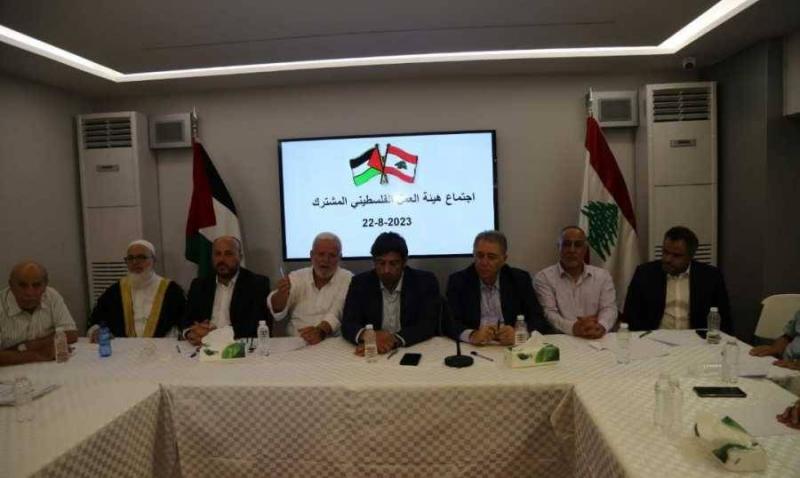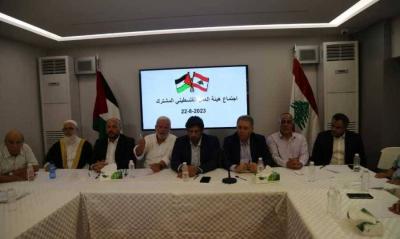The "Palestinian Joint Action Authority" in Lebanon received the final report from the "Investigation Committee" regarding the assassination of Palestinian National Security Forces commander in Lebanon, Major General Abu Ashraf Al-Armoshi, and his companions, as well as the assassination of Abdul Rahman Farhoud, during a broad meeting held at the Embassy of the State of Palestine in Beirut. Palestinian sources who participated in the meeting revealed to "Nidaa Al-Watan" that the ten-page report named eight suspects from Islamist activists (previously known as Jund al-Sham and the Muslim Youth) implicated in the assassination of Al-Armoshi and his companions, notably including both Lebanese and Palestinians.
The sources clarified that the four-hour meeting resulted in an agreement on a series of follow-up mechanisms, starting with the peaceful surrender of the suspects in the assassination and anyone identified by the investigations to the Lebanese judiciary within a short period; otherwise, alternative options would be considered. It was noted that a long and deep discussion took place during the meeting, which included members of the Joint Action Authority and the Investigation Committee, the Palestinian Ambassador to Lebanon Ashraf Dabbour, the head of the Lebanese-Palestinian Dialogue Committee Bassel Hassan, a representative from the Army Command, and representatives from the Amal Movement and the Popular Nasserist Organization, Abu Jamal Issa.
However, it was striking in the official statement issued after the meeting that it did not name specific individuals as many had anticipated but rather kept things general. The statement said: "The Palestinian Joint Action Authority in Lebanon held a meeting at the Embassy of the State of Palestine in Lebanon to discuss the security and social conditions in the Ain Al-Hilweh camp, particularly the unfortunate recent events that followed the two assassinations. The meeting was characterized by a high sense of responsibility and a level of understanding and integration regarding the data and visions exchanged among all the attendees, which were based on the report of the investigation committee tasked by the Palestinian Joint Action Authority. The attendees emphasized the need to ensure security, safety, and peace of mind, and to provide a decent living for our people in Ain Al-Hilweh camp and the surrounding Lebanese neighborhood, after discussing the necessity of the withdrawal of armed individuals from UNRWA schools and reducing military measures in certain neighborhoods of the camp."
The residents of the camp lived through tense hours as rumors spread on various social media platforms, especially WhatsApp groups, creating fear and panic among civilians, including women, children, the elderly, and the sick. This prompted some families to flee for fear of renewed clashes, while some shop owners preferred to close their businesses and stay in their homes, particularly in the Al-Safsaf area along the southern upper street. The atmosphere of tension coincided with continued military mobilization between Fatah Movement and Islamist activists following the clashes that occurred on July 30 after the assassination of Al-Armoshi and his companions, resulting in 12 fatalities and more than 65 injuries, not to mention significant damage to property, including homes, shops, vehicles, and infrastructure such as electricity and water.




